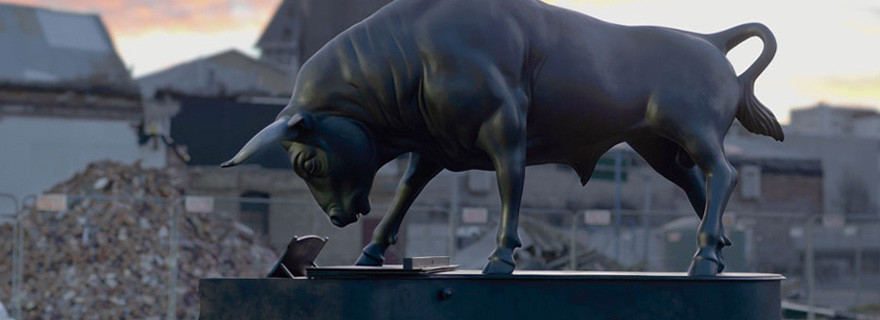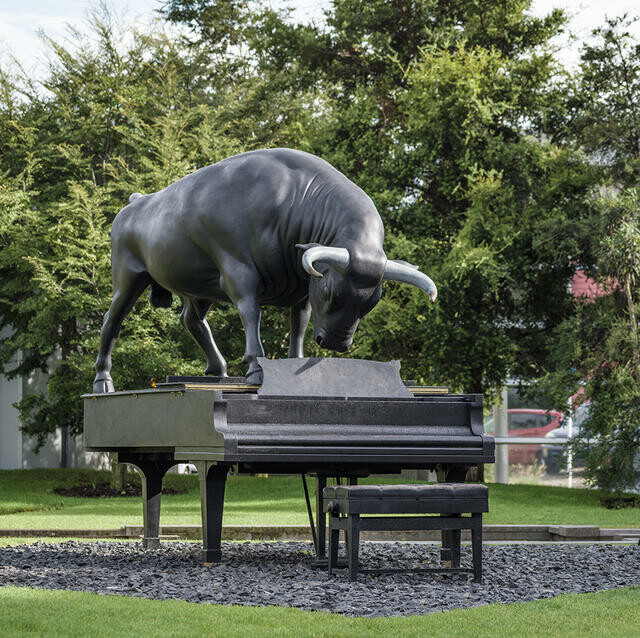B.
Parekowhai in Paris
Behind the scenes
Fresh from its recent success at the Venice Biennale, two works from Michael Parekowhai's project On First Looking into Chapman's Homer have travelled to Paris.
They are now being exhibited at the musée du quai Branly, and I was fortunate enough to fly over and assist with the installation, as Christchurch Art Gallery is managing the tour of the work and its return to New Zealand. After packing the work in Venice, we arrived in Paris a couple of days before the installation. Michael Parekowhai's team (Ian Radford and Roy Adams) and I went straight to the musée to look at the site, outdoors in the Jardin de la cistude, and talk through some of the technical aspects of the project.
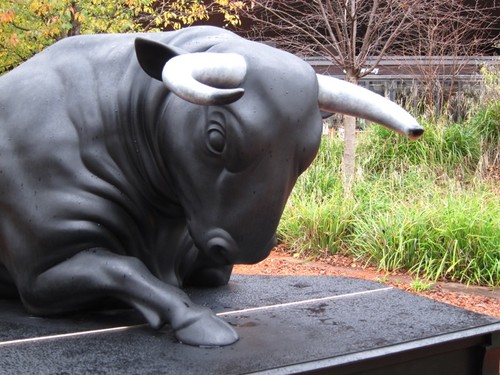
A Peak in Darien. Courtesy of the artist and Michael Lett Gallery.
The plan was to crane the works into their location on the two platforms in the Jardin from the street at the rear of the musée. In order to allow enough space for the crane and the unpacking of the very large crates, the musée had arranged for the street to be cleared of all vehicles the day before the installation began. Signs were placed on the street to let people parking there know that the following day their cars would be towed away, and sure enough they were.
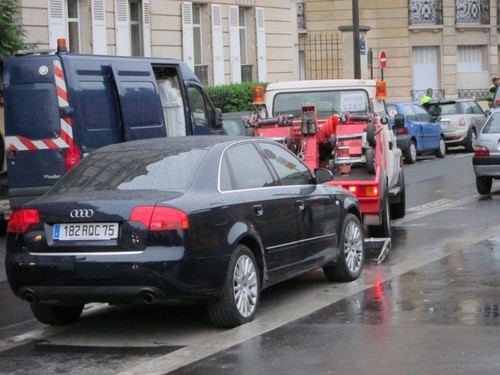
Gone in 60 seconds.
The following day we arrived at the musée du quai Branly at 7am. The morning was crisp, and as forecasted it was a stunning day with a clear blue sky. (We'd been dreading rain.)
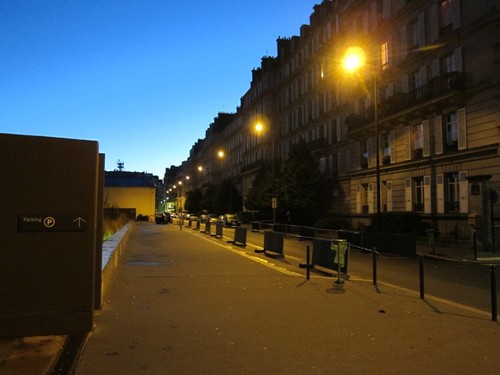
The massive truck delivering the works from Venice arrived as scheduled.
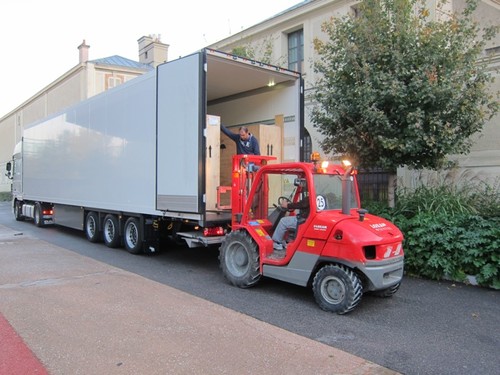
The crates containing Chapman's Homer and A Peak in Darien (Michael Parekowhai's bronze bulls and pianos) were unloaded from the truck and carefully moved to the footpath adjacent to the spot where Michael—from his studio in Henderson—had planned to install them.
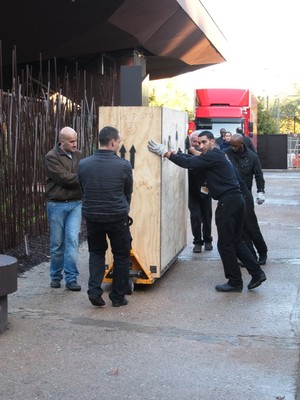
Carefully guiding the 1 tonne crates down a ramp to the footpath.
From here the large crane would be used to lay the crates flat for opening and then lift the works from their crates across a pond and into position.
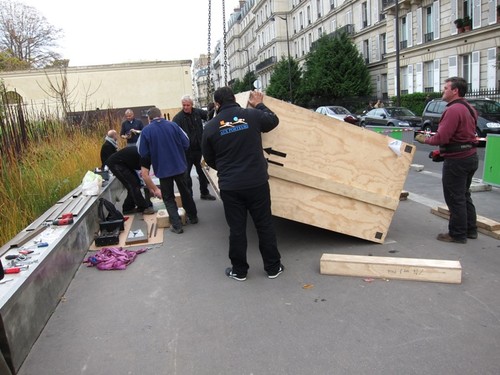
The crane driver (on the right) lowering the crates into position.
Michael's assistants Ian and Roy have moved and installed these works a number of times now, and have developed considerable expertise at it. It's not easy. On this occasion, once the lids were removed from the crates, we had to factor in the cheerful exuberance of the people assisting. The works themselves look relatively simple to install: a bull sitting on a piano seems straightforward. But the way they fit together, the nature of the surfaces and their sheer weight means that a good amount of thought and care is required before attempting each movement. Once we'd calmed everyone down (and hidden all of the spare spanners), Ian and Roy set about unbolting each work from its crate. Once free of their fastenings, a crane lifted the works into position.
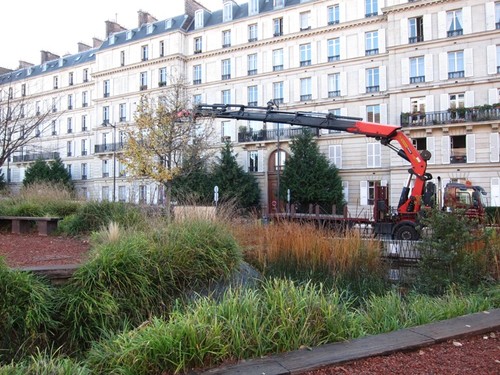
The installation drew a lot of attention from passersby and people living in the apartments over the road.
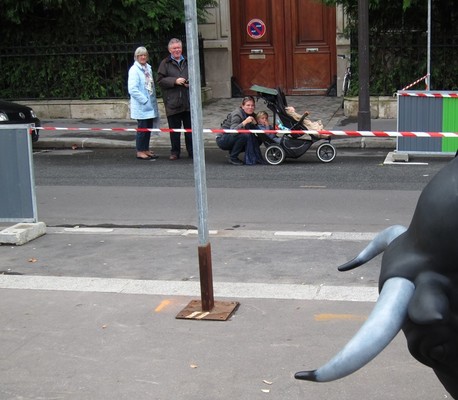
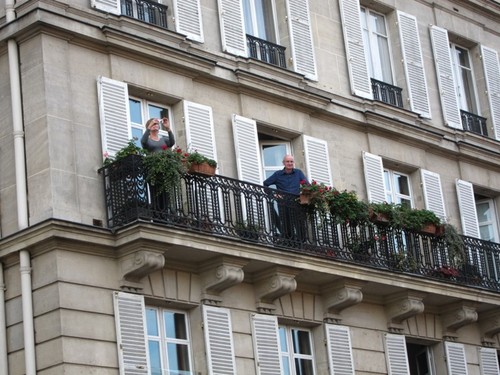
Neighbours photographing a bull in mid air.
Once the works were installed, extra stone chips were spread on the ground surrounding the pianos. Suddenly, all the effort was invisible and it looked like the works had been there forever. Chapman's Homer and A Peak in Darien will continue to be exhibited in view of the Eiffel Tower at quai Branly until they return to New Zealand in mid 2012.

Chapman's Homer and A Peak in Darien. Courtesy of the artist and Michael Lett Gallery.
The carved red piano, He Korero Purakau mo te Awanui o Te Motu: story of a New Zealand river, which accompanies Chapman's Homer and A Peak in Darien will be installed in the foyer of the musée du quai Branly on 13 February 2012. If you're in Paris before the exhibition finishes on 1 April 2012 then go and see the exhibition and be very proud of what Michael Parekowhai has achieved; I know I was.
Special thanks to Creative New Zealand for their support in touring this exhibition.
